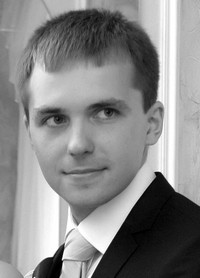EFFICIENCY OF USING BIOFEEDBACK METHODS IN THE TRAINING PROCESS OF QUALIFIED SWIMMERS
Ключевые слова:
sports swimming, technical training, biofeedback methods, training process, movement structure.Аннотация
Objective of the study was to determine the effectiveness of the application of biofeedback methods in the training process of highly qualified swimmers for the formation of skills to differentiate movement parameters during swimming.
Methods and structure of the study. A pedagogical experiment was conducted from October 2021 to February 2022. It was held on the basis of swimming sections in the sports schools of the city of Belgorod, sports schools «Spartak» and School No. 3. Qualified swimmers consisting of 65 people took part in the experiment. The control testing included the calculation of the reproduction error as a percentage of the values of speed, pace and "step" of swimming among athletes.
Results and conclusions. Most athletes, especially beginners, do not know how to optimally distribute forces at a competitive distance. The passage of a distance, as a rule, is characterized by an increase in swimming speed to a maximum, an increase in the frequency of strokes and a small length of the “step” at the beginning of the distance and a decrease in the speed and frequency of stroke movements towards its end. In our opinion, accurate reproduction and the ability to control the values of speed, pace and "step" of swimming will help athletes achieve the optimal combination between these elements of technology, which in turn will help to achieve the maximum level of speed.
Библиографические ссылки
Avdienko V.B., Voevodin T.M., Davydov V.Yu. et al. Organizaciya i planirovanie sportivnoj trenirovki v plavanii [Organization and planning of sports training in swimming]. Samara: SGPU publ., 2005. 72 p.
Arishin A.V., Arishina M.V. Sovershenstvovanie funkcional'noj i tekhnicheskoj podgotovlennosti plovcov vysokoj kvalifikacii v trenirovochnom makrocikle [Improving the functional and technical readiness of highly qualified swimmers in the training macrocycle]. Plavanie X. Issledovaniya, trenirovka, gidroreabilitaciya [Swimming X. Research, training, hydrorehabilitation]. Proceedings International scientific-practical conference. 2019. pp. 84-86.
Melnikov S.V., Narskin A.G. Modelnye harakteristiki funkcionalnoj podgotovlennosti vysokokvalificirovannyh plovcov [Model characteristics of the functional readiness of highly qualified swimmers]. Mediko-biologicheskie i pedagogicheskie osnovy adaptacii, sportivnoj deyatelnosti i zdorovogo obraza zhizni. [Medico-biological and pedagogical bases of adaptation, sports activity and a healthy lifestyle]. Proceedings national scientific-practical conference with international participation. 2019. pp. 61-65.
Moshkina N.A. Monitoring funkcionalnoj podgotovlennosti plovcov dlya razrabotki modelnyh znachenij fizicheskoj rabotosposobnosti [Monitoring of the functional readiness of swimmers for the development of model values of physical performance]. Pedagogiko-psihologicheskie i mediko-biologicheskie problemy fizicheskoj kultury i sporta. 2019. Vol. 14. No. 2. pp. 9-15.
Solopov I.N., Shamardin A.I. Funkcionalnaya podgotovka sportsmenov [Functional training of athletes]. Volgograd: PrinTerra-Dizajn publ., 2003. 263 p.

Дополнительные файлы
Опубликован
Версии
- 2022-05-20 (2)
- 2022-05-20 (1)
Как цитировать
Выпуск
Раздел
Лицензия

Это произведение доступно по лицензии Creative Commons «Attribution» («Атрибуция») 4.0 Всемирная.
